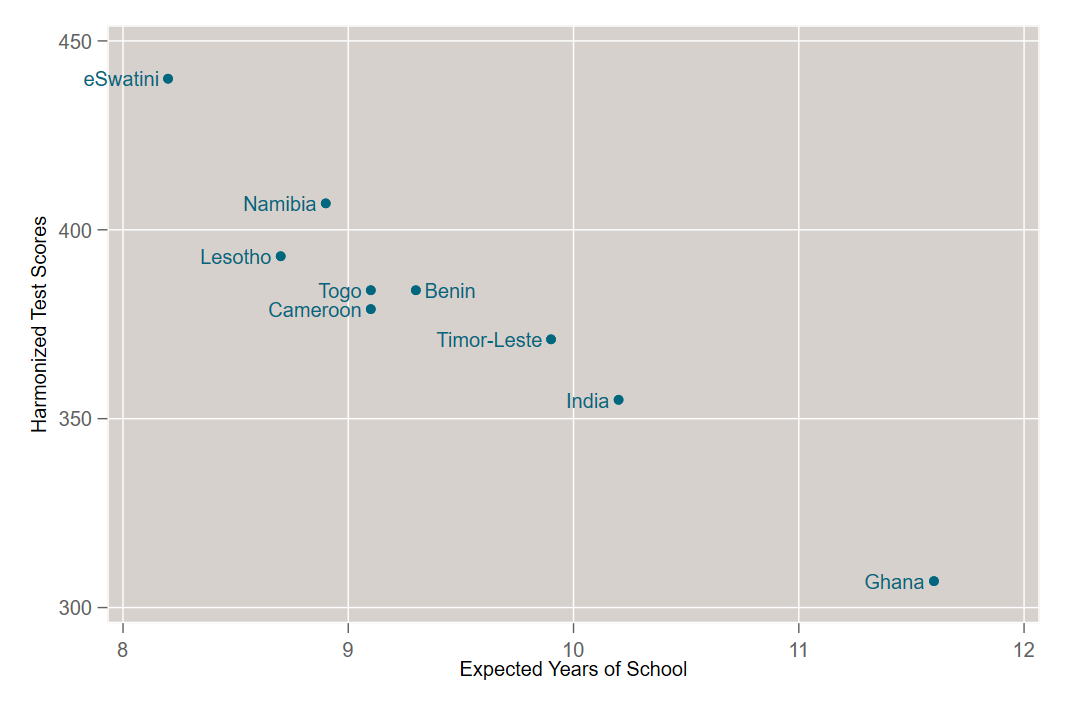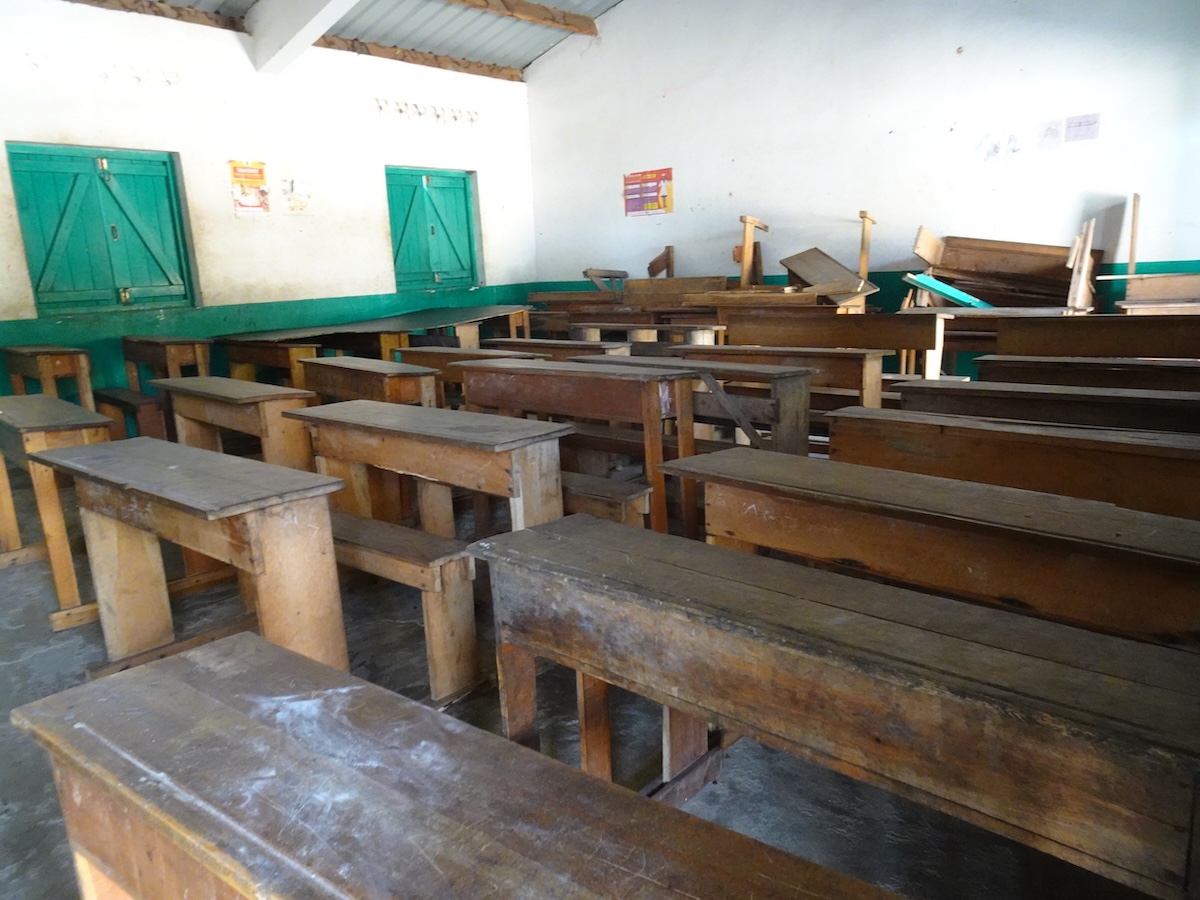Recommended
The gap in both quantity and quality of schooling between high-income countries and low-income countries is big. Kids in low-income countries will attend five fewer years of school, and they won’t learn as much while they’re in the classroom. The average student in low-income countries performs worse than 95 percent of the students in high-income countries. How can education systems narrow that gap?
There are many studies that show how one intervention reduces dropouts (better access to school) or another intervention increases learning (better quality of schooling). But policymakers and others care about a combination of access and learning! Just like Malala Yousafzai says, people want “years” of “quality education.” So how do you choose between one intervention that says it will keep kids in school longer and another that says it will boost their learning?
Presenting the results of evaluations in terms of learning-adjusted years of schooling, or LAYS, is one solution. LAYS are just what they sound like: take the additional access to schooling that an intervention offers and adjust that by the quality of that schooling, or take the additional quality that an intervention offers and translate that to how long it would take to achieve that learning in “business as usual” schooling. We lay out how to do this. We also show what this measure tells us about the effectiveness (and cost-effectiveness) of available interventions to increase and improve learning in our new working paper: “How to Improve Education Outcomes Most Efficiently? A Comparison of 150 Interventions Using the New Learning-Adjusted Years of Schooling Metric.”
Learning-adjusted years of schooling across countries
In previous work, we’ve used LAYS to compare access and quality of education across systems. So, as you can see in the figure below, youth in Singapore and in Israel attend similar numbers of years of school by the time they enter the workforce. But youth in Israel walk away with less to show for their years (at least in terms of test scores): they have lower learning-adjusted years of schooling. Meanwhile, youth in Sierra Leone have fewer years of schooling and even fewer learning-adjusted years of schooling.
Figure 1. Years of schooling and learning-adjusted years of schooling across education systems
Source: Angrist et al. 2020.
Learning-adjusted years of schooling across interventions
So what should Sierra Leone (and all the other countries with fewer learning-adjusted years of schooling) do? Which interventions will help the most to close the gap? We translate the results of 150 impact evaluations with educational outcomes across 46 low- and middle-income countries into how many additional learning-adjusted years of schooling they yield. For the subset of studies that include cost analysis, we calculate how much of a gain in LAYS you get per $100 per student (Figure 2). Average spending per student even in the lowest-spending region (Sub-Saharan Africa) is more than double $100, so these are relevant amounts of spending.
Here are the top three performing classes of interventions.
-
Providing information on education benefits, costs, and quality (such as giving secondary school students better information on the returns to education in the Dominican Republic). This leads to modest gains in LAYS but it’s cheap, so the value-for-money is high.
-
Targeting instruction by learning level rather than grade (such as “Teaching at the Right Level” and other targeting and tracking interventions). A targeted instruction program in India yielded upwards of four additional LAYS for $100.
-
Improving pedagogy through the use of structured lesson plans, monitoring, teacher professional development, and student learning materials (like the Tusome national literacy program in Kenya).
On the other hand, simply providing additional inputs like textbooks or computers or sending teachers to a general skills training course don’t deliver gains in LAYS. As you can see in the figure, there is variation within categories. Information interventions are high variation (some work well and others not so much), whereas structured pedagogy interventions are lower variance: they seem to work similarly across multiple studies, making them even smarter bets for educational investments.
Figure 2. How many LAYS do you gain from each class of intervention per $100?
Source: Angrist et al. 2020. This show the LAYS gained from each study, grouped into categories. The boxplot describes the 25th and 75th percentile. The paper has an additional figure with all 150 studies, including those that don’t report cost data.
The size of these impacts is significant. Some of these interventions can close much of the gap between how many years of schooling students gain in a country and the learning-adjusted years of schooling in that same country—narrowing the within-country gaps from Figure 1 above.
Takeaways
In addition to giving a combined measure of access and quality of schooling, LAYS provide a more intuitive measure for learning gains than the usual metric, standard deviations. Our LAYS analysis informed many of the recommendations in a new report by the Global Education Evidence Advisory Panel (convened by the World Bank and the UK’s Foreign, Commonwealth & Development Office), which lays out recommendations on cost-effective interventions to improve global leaning. They usefully map interventions into categories such as “great buys” (highly cost-effective with strong evidence), “promising but low-evidence” (small, rigorous studies show these are promising, but we need to learn more), and “bad buys” (strong evidence that these have not been cost-effective).
LAYS require a number of assumptions (read all about them in the paper!), and as evaluators use more standardized exams across evaluations, some of those assumptions will be unnecessary. Our current analysis is also limited by the interventions that have been evaluated to date. This doesn’t mean we have all the answers: as education systems continue to innovate, we hope that researchers will evaluate those innovations and we can add them to our analysis. Also, while evidence-backed interventions can help, sustained improvements at-scale also require system-level reform. But as with disability-adjusted life years (DALYs) in the field of public health, LAYS provide a metric against which education interventions with a range of outcomes can be measured, both now and in the future.
As with any synthesis of what works in education, these recommendations should be the beginning of a conversation, not the end of it. What works in one place may not work in another. Whether a program will translate depends on local conditions, the strength of the evidence from elsewhere, and how well the program can be implemented in the new setting. But education interventions that have worked well in multiple settings certainly provide guidance to education systems seeking to improve. LAYS provide an opportunity to see what has worked well in other settings as a great starting point for policy discussions on how to improve educational opportunities for children and youth.
Disclaimer
CGD blog posts reflect the views of the authors, drawing on prior research and experience in their areas of expertise. CGD is a nonpartisan, independent organization and does not take institutional positions.









